Your Passion is Not an Island to Itself
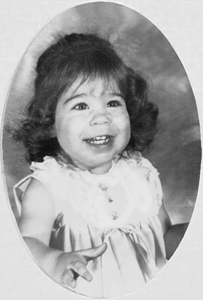

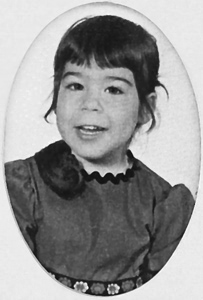
I started drawing as soon as my dimpled little fist could grasp one of those big fat crayons. I’d been fascinated by the concept of art since I was two, when my mother explained, in simple terms, the idea of imagination and art looking like reality. I didn’t care how long it took…if someone else could do it, I wanted that magical power to create something from nothing and make people believe it. I wanted it more than anything–and it was not a passing fancy. Decades later, the fire hasn’t faded.
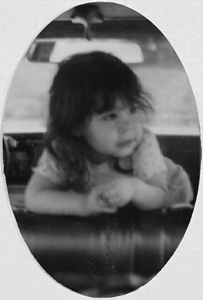
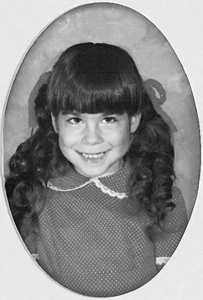
When my class hit second grade, we all had to take IQ tests. I scored within a couple points of genius and was placed in a “gifted” class the next year with other advanced students. We got extra projects to stimulate our nimble, hungry minds; we had an engaging teacher, and most of us were quite happy and productive. My artwork flourished, I had a diverse group of friends, and my life was very, very good.
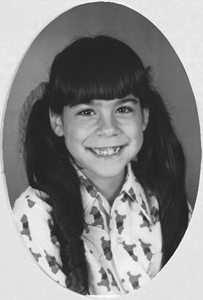
Then my family had to move. My father’s job caused this occasionally, and it was always an upheaval. But in this particular timing, in the place we ended up, was to do nearly irreparable damage to my academic path. The new school district didn’t even have an accelerated program. I was placed in what would be my normal grade with no accommodation or interest in the level of study I had become accustomed to. My new teachers had no recourse provided them by the district; their classes were large, their syllabi were set and their hands proverbially tied. But I wasn’t privy to this fact.
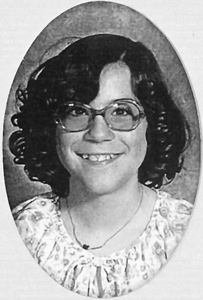
I struggled in my new school, academically and socially. I was the “weird new kid”: hurting in the looks department, wearing outdated hand-me-downs and sporting a “funny accent” (Southern), and newly being forced into wearing thick brown ugly glasses. On top of that, I was presented with scholastic material I had mastered one to two years before. I found zero incentive to repeat studies with which I, by then, was bored. I made few friends, least of all my teacher, who (in my angry young eyes) bore almost as much blame for this torture as my parents. And my parents were absorbed with starting the new job, setting up the new household, getting acclimated to the town and its citizens, and dealing with my older siblings’ more rebellious growing pains to the disruption in their own lives as well. Lost in the shuffle, I felt like the invisible girl, and I naïvely began devising an outlandish plan to run away, convinced that no one would notice. Luckily, a sensible girl named Cheryl, in whom I had confided this boneheaded plan, talked me into waiting a while to see if things got better, pointing out that I had no money for a bus to California, and had no verified place to live if I could get there. She should have been in a “gifted” class! She had told me, that if I left…at least she’d notice. I had to admit, it was nice to hear this from somebody.

So, lacking any better plan, I stayed around, and went on strike and refused to do my homework. Rivers of notes were sent home from my fourth grade teacher, followed by visits to the principal’s office, parental lectures after PTA meetings, swats at school for repeated offenses with a thick oak board with holes drilled in it for better aerodynamics, and a fair number of swats at home with lesser tools of inspiration, yet none of this was provocative enough for me to mend my ways. All of this was for missing what I rightfully viewed as redundant homework assignments, mind you. Fifth grade came and my resentment festered, and my study habits grew more dismal; D’s and even occasional F’s became heavyweights on my report card, although I still got A’s in English and spelling because I actually liked them. At quarterly meetings, my fifth grade teacher spoke kindly of me to my parents, and he noted that I was still brilliant for my age, yet I wasn’t being challenged enough…. But he was simply fascinated by my early artistic prowess. He showed my folks the papers he had confiscated that I was doodling on, telling them how advanced I was, and he asked them on more than one occasion if he could keep some of the drawings to have as proof that he knew me “when” someday I would be a famous artist (so sorry to have disappointed him; he was a sweet old man). It’s very flattering, of course, but by this time my folks were not only tuned into the fact their littlest had a serious issue afoot, but they were also straining at any way to get through to me; I had shut them out along with everyone else and lived in a tormented fantasy world, trying to escape the ennui and frustration I felt toward the real one.
When you’re a kid you don’t necessarily understand that adults go where the work is and everything (and everyone) else kind of has to fall in line with that, no matter whether or not it’s ideal; meals have to come from somewhere. A kid just understands how he or she feels until something is explained, or better, demonstrated, to the end of changing that mindset with a convincing argument and fact. I still needed that presented to me in a way that I felt mattered. I held out stubbornly, and foolishly.
Changes at home continued and I still felt like a last priority. My social life was very limited by multiple factors beyond my control and I had a big chip on my shoulder. Moving had been hard on me, at (apparently) a key age. I had been very popular with many friends in my old town, where we had owned a nicer house in a neighborhood full of kids, where there were things to do and fun to be had, and I had enjoyed a bigger room, and now this still-new place I hated for more reasons than I could count. I liked my fifth grade teacher for his appreciation of what I appreciated, but it didn’t improve my grades much; I was still bitter and lacking any motivation, and frankly, my single-minded attitude stunk. I was beginning to fall behind, particularly in pre-algebra.

When I was in sixth grade, my father had an epiphany to appeal to me through the one thing he knew I cared about most: I loved to draw…compulsively, all the time, and on any paper product I could get my hands on. I had always wanted to be an artist, and by then I had told my folks plainly that I simply didn’t see any point in all these other classes that didn’t interest me, so I just wasn’t going to waste any more time or effort in them. This certainly did not sit well with them, yet no manner of wheedling, bribery, threatening, punishment, or gnashing of teeth was swaying my stubborn will.

Through his job, Dad had gotten acquainted with many of the area denizens, including the local art star, and he asked this man’s advice. The artist and muralist offered to talk to me for him. He even arranged to visit me at school, a visit I was very excited about – I felt like I was granted an appointment with a celebrity. It was a topic of curiosity for some of my classmates: “Why is he visiting you?” I just smiled.
When he sat me down to talk I was very nervous, and I wanted to learn all I could. I knew there was still so much more about art I needed to discover, and we were only to talk for about a half-hour…how could I squeeze the most out of this precious time? After introductions, I didn’t know what to say or how to start, so he took his turn first, to ease me in to asking questions later.
He worked around into relating to me how he would daydream in school, and admitted that at first he hadn’t found much interest in math, science, history, or even English (I still liked English class: a bit of a word geek, I actually enjoyed diagramming sentences). I listened intently. Then he said, “But after a while, I learned that I truly needed all those classes to make good art.” I was dumbfounded. How could all this stuff be relevant? All I wanted to do was draw; I didn’t need a slide rule or a dictionary for that. I started to smell a trick from my dad.
The artist continued. He pointed out that all the famous artists used mathematical principles (geometric and algebraic) as the basis for drawing things in linear perspective and in good proportion, so that things look right; he needed to understand fractions and decimals and figure circumferences, and plenty more. He even drew some things to demonstrate. He said science comes into play when mixing pigments and mediums, in chemistry glazes for ceramics, in studying biology and anatomy to draw beautiful birds and animals, and that ultimate Holy Grail for artists, the human form. Artists study, illustrate, and draw inspiration from literature. And artists throughout time recorded history either from their own pasts or actually as it unfolded; they worked jobs where they charted maps, relating to geography; they illuminated planets in astronomy books, and illustrated characters in yet more literature – they touched on every other subject in school.
It all was relevant! My mind shifted so suddenly that I nearly fell over.
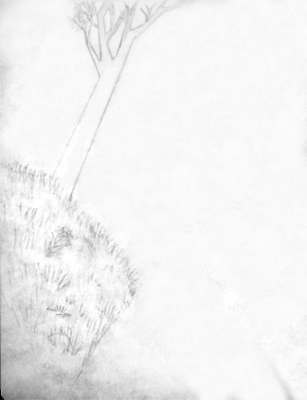
He told me my drawings showed advance and promise; that he could tell by the complexity and focus of my few questions that I was a bright girl; he hated to think of me wasting my talent, potential, and obvious passion for my art. He was convinced I would be a brilliant artist if I applied myself. So he struck me a deal: if I brought my grades up in my other subjects, then he would give me a lesson on how to draw any category of thing I wanted to learn to draw…and then he asked me what that would be. I thought for only a few seconds before proclaiming, “Trees!” I so very much wanted my trees to be not the stiff, tortured things I created, but more realistic and believable, like the botanical illustrations in my mother’s bird books; I loved nature. So he agreed to teach me to draw trees if my grades improved.
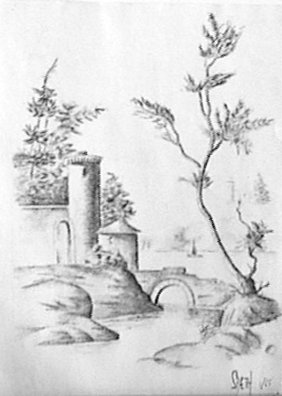
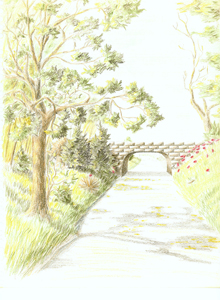
It worked. I strived hard all through sixth grade to get back on track in all my classes. I had some hiccups but I brought all my grades up at least one letter grade, and several two and one three. I started communicating more with my folks, and soon proudly showed my report card to my Dad, and asked him about my pending art lesson. He followed up with that artist, who, sadly, had become too busy to keep his promise to me, for which I was bitterly disappointed…but…that didn’t stop me from learning how to draw trees! Now armed with biology lessons from my science book and studies from encyclopedias and botany books from the library, I became a photorealistic tree-drawing powerhouse on my determined own. I don’t think it was to spite him, as he likely wouldn’t have noticed me either way, being in our separate bubbles of society. I think it was just I was that passionate about trees. (Apparently I still am!) And I learned about the inconstancy of human nature and that we all make mistakes and disappoint people – but I also learned that we could still choose to move on anyway, and take accountability for our own respective paths in life.

Years passed, and I evolved far beyond just trees, and eventually beyond mere realism. Even without the initial tree lesson, that artist gave me something priceless: the gift of learning with intention. I finally noticed that my mother also modeled a love of learning, and my father was a self-taught professional as well. As I matured, I came to appreciate being better rounded, both as a thinker and as a creative. I learned to adapt to my new environment, and made more friends…and I learned that a lot of the barrier to that gain had been my own attitude. I learned that many distinct, seemingly separate things actually could be integrally related and interdependent. I realized that the payoff to effort might not be immediately apparent or accessible, but that compiled knowledge accumulates and bands together to make powerful structures on which you can build bigger and better ideas. I learned that taking a studious approach could render me more self-sufficient. I learned that I can develop many different facets to myself, and that in doing so, I would never be bored again. Indeed – I never am.
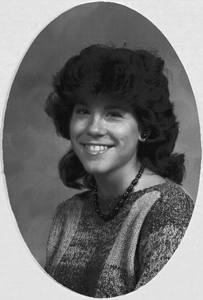
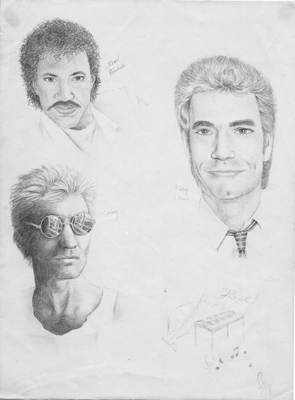
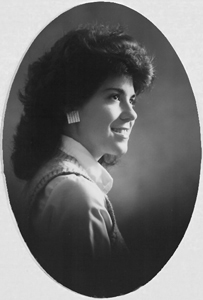

In junior and senior high, I made honor roll more often than not, and only really struggled once getting to advanced Algebra and Chemistry…my mind wasn’t yet to the point of very abstract thought (and that still showed in my ultrarealistic artwork, which I started showing in a gallery at 16, since I had already begun selling portraits at 14). My folks pushed me on these classes in the college bound track in high school, but they finally recognized I was truly besieged by material a bit too advanced for me just yet. Our state was plagued with math teachers who may have known math really well but did not have the communication skills to teach it to students who struggled with it like me. My high school geometry teacher did pretty well, though, and it helped that it was a more concrete category of math because that was how my mind operated then.
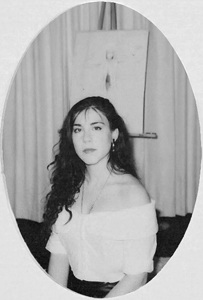
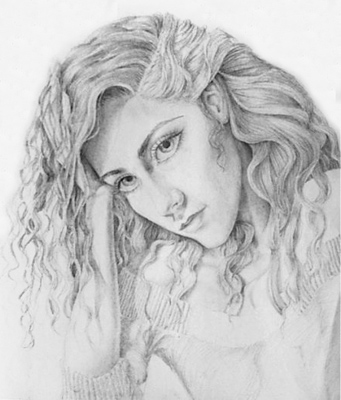
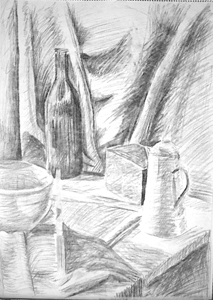
I had to take algebra three times in college to pass it, and the third time, I got my first really good math teacher ever, and realized it wasn’t so much my fault as the system was failing me up to that point: my university at that time had the highest math failure rate in the state; however, with this specific professor’s patience and her devoted tutoring, I made 96% on the comprehensive final – including trigonometry and logarithms. At the university I still had some difficulty focusing on some studies due to my newfound freedom, but I grew exponentially in my depth and breadth of artistic skills. I took a myriad of classes including sculpture, printmaking, ceramics, various painting classes, and lots of art history; I learned new media and techniques; and I even made a tentative breakthrough to abstraction for the first time: something I struggled with for years.

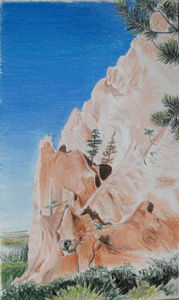
My years at the art institute were even more intense, allowing me to apply my artistic abilities, problem solving prowess and creative imagination in new ways in the industrial design program. I learned to manipulate new media and utilize new materials and processes. Woodworking, welding, plastic production, sand casting and the design process and projects in all of those and more made me a much more well rounded artist, and everything involved math, science, history, literature, and/or more, as well as building on foundations I already had. It was exciting and my mind grew both hungrier and far more productive. I was designing things spontaneously in my sleep, and began keeping a sketch journal next to my bed to record lucid ideas to someday bring to fruition.
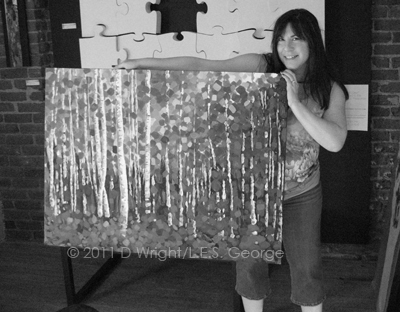
Nowadays I am a glutton for knowledge; I want to know what makes everything tick. I earned two college degrees. While getting my K-12 art teaching degree, I discovered that in children, artistic giftedness routinely walks hand in hand with academic giftedness, so if you’re a parent reading this and my story rings familiar in your own progeny, look into testing your own kid(s) and arrange for them to get the mental stimulation they need, even from a tutor or mentor if necessary.
I want to point out that a child needn’t have a high IQ to be a good student: passion is nearly everything. Zig Ziglar, an American author, salesman and motivational speaker of many inspirational quotes, rightly said, “Your attitude, not your aptitude, will determine your altitude.” I’m a living case study. So-called “natural” talent is worthless and fruitless without concentrated effort. The unmotivated will be outpaced by the motivated. Passion can overcome any lack of ability, and it drives gaining any nuts-and-bolts skills one requires in one’s quest.
Einstein said, “The true sign of intelligence is not knowledge but imagination.” I say they both work in concert; he himself proved that. I continued studying on my own, outside of school, ever since my last graduation, and if I ever won the lottery I’d go to “school” the rest of my life – at least intermittently; I am at my creative and intellectual best while in the stimulation of some sort of an academic environment, even if self-created. I’ve taught myself foreign languages, web design, auto repair, musical instruments, tons of artistic techniques and mediums, and most importantly, I taught myself to always be learning and that there’s nothing I can’t study; if I don’t know something, I know how to find out. I can enrich my understanding of the world through diverse sources, and I can always find ways to improve myself: not just as an artist but also as a human being in society, and my passion can spread far, far beyond its own selfish little island.
That is a priceless lesson, and one that has a huge return on investment.
It’s important for artists to constantly be gaining knowledge in many areas: devouring books, news of new things in science, understanding, human psychology, staying up to date in politics, knowing milestone literary works, being informed on historical foundations, learning new techniques and media, and being in touch with pop culture. Professional artists may be some of the smartest people you will meet; they are natural tinkerers who want to know how everything works and what makes people tick. Good art has a message and competent artists strive to know what they’re talking about, to extend the conversation to society at large.
No matter who said it or exactly word-for-word how, (and there are some debates and misunderstandings), but there is truth to the quote that says, “Beware of artists; they mix with all levels of society and are therefore most dangerous.” People in power are often intimidated by anyone who is well informed; they hold those in power accountable and expose corruption, as well as those who help to whistle blow or educate others to do the same. It’s important work.
This post is the introduction and inspiration for my new blog series, “the well rounded artist”. Look for more entries in the future that tie art to other subjects in school, and in life.
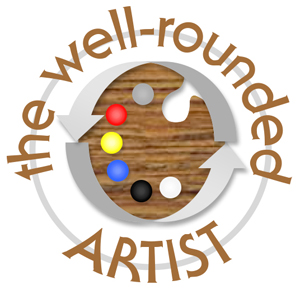
All content on this site © 2013-2020/present L. Eilee S. George; all rights reserved.



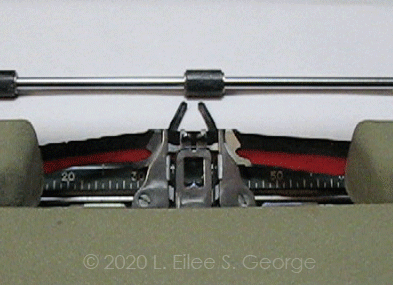 I’m Eilee George, and I like to write anecdotal and how-to blog posts in several creative areas. A lot of my art lesson posts are collected under the Art menu heading above, but you can find them here, too, along with a lot of other topics. I am a strong believer that ANYONE can draw if they want to learn – it’s a set of skills and principles like anything else. As a prolific writer (although not always online), I prefer to use an unstructured, informal sort of prose as my writing style; thus I chose “prose” over the word “blog” in the menu tab title…but it is essentially a blog. On my own time, I write short stories, essays and lots of poetry and songs. Here, I try to categorize topics by media. The following table of contents will, for now, serve only as a teaser as to what you may be able to look forward to reading later on, if you’re continuing in your creative quest and if I find more time to write; some things may change. If you see a link I’ve already posted it. I’ll throw other unplanned entries in as special events occur. If the presentation gets confusing, shoot me an email
I’m Eilee George, and I like to write anecdotal and how-to blog posts in several creative areas. A lot of my art lesson posts are collected under the Art menu heading above, but you can find them here, too, along with a lot of other topics. I am a strong believer that ANYONE can draw if they want to learn – it’s a set of skills and principles like anything else. As a prolific writer (although not always online), I prefer to use an unstructured, informal sort of prose as my writing style; thus I chose “prose” over the word “blog” in the menu tab title…but it is essentially a blog. On my own time, I write short stories, essays and lots of poetry and songs. Here, I try to categorize topics by media. The following table of contents will, for now, serve only as a teaser as to what you may be able to look forward to reading later on, if you’re continuing in your creative quest and if I find more time to write; some things may change. If you see a link I’ve already posted it. I’ll throw other unplanned entries in as special events occur. If the presentation gets confusing, shoot me an email